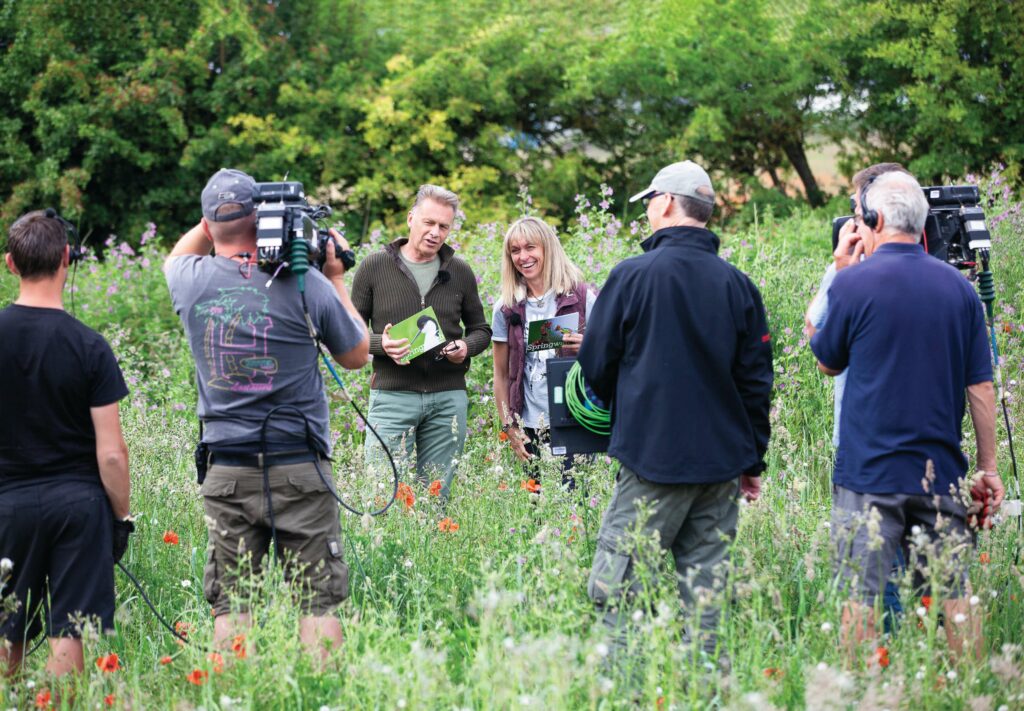
Springwatch: Behind the Scenes
It’s as firm a fixture in the BBC’s spring calendar as the FA Cup Final. But have you ever wondered what goes into making an episode of Springwatch?
For an hour a night, four nights a week and for three weeks from the end of May, the BAFTA-winning Springwatch will again see the nation glued to BBC Two. Since the series fledged in 2005, presenters like Bill Oddie, Kate Humble, Simon King and Martin Hughes-Games, plus today’s crop of Gillian Burke, Chris Packham, Michaela Strachan and Iolo Williams, have engaged a primetime audience with the wonders of the British countryside. In spring 2022, BBC Wildlife spent a day on location at Wild Ken Hill, Norfolk, with Chris and Michaela to see how the programme comes together.
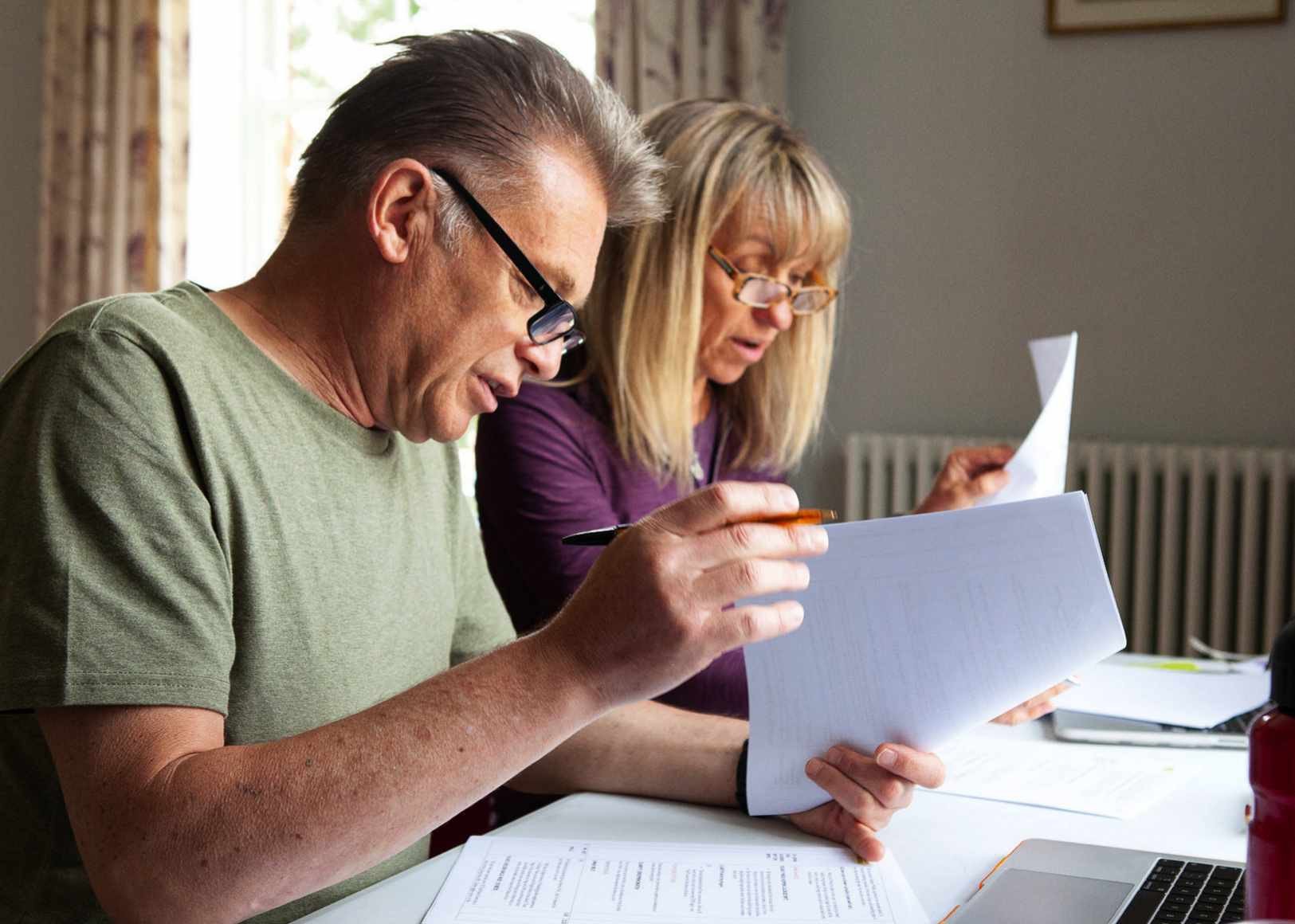
10AM THE FIRST CALL OF THE DAY IS the editorial meeting. The presenters join via Zoom from their respective locations – Iolo on Mull, Chris and Michaela in Norfolk, and Megan McCubbin in Northumberland.
Talk is of the weather forecast. Will the rain hold? The weather on Mull is rotten and Iolo is sheltering from the storm, while in Norfolk the sun is beating down.
In Norfolk, Chris and Michaela are in the Green Room (actually the living room of the estate manager’s charming old red-brick cottage). The windows offer idyllic views across glorious red poppy fields.
Beyond the garden wall is a barn, where a mass of cabling spaghettis around giant trailers and makeshift workstations. A bank of screens shows the live feed from cameras tucked away in boxes, barns and boltholes.
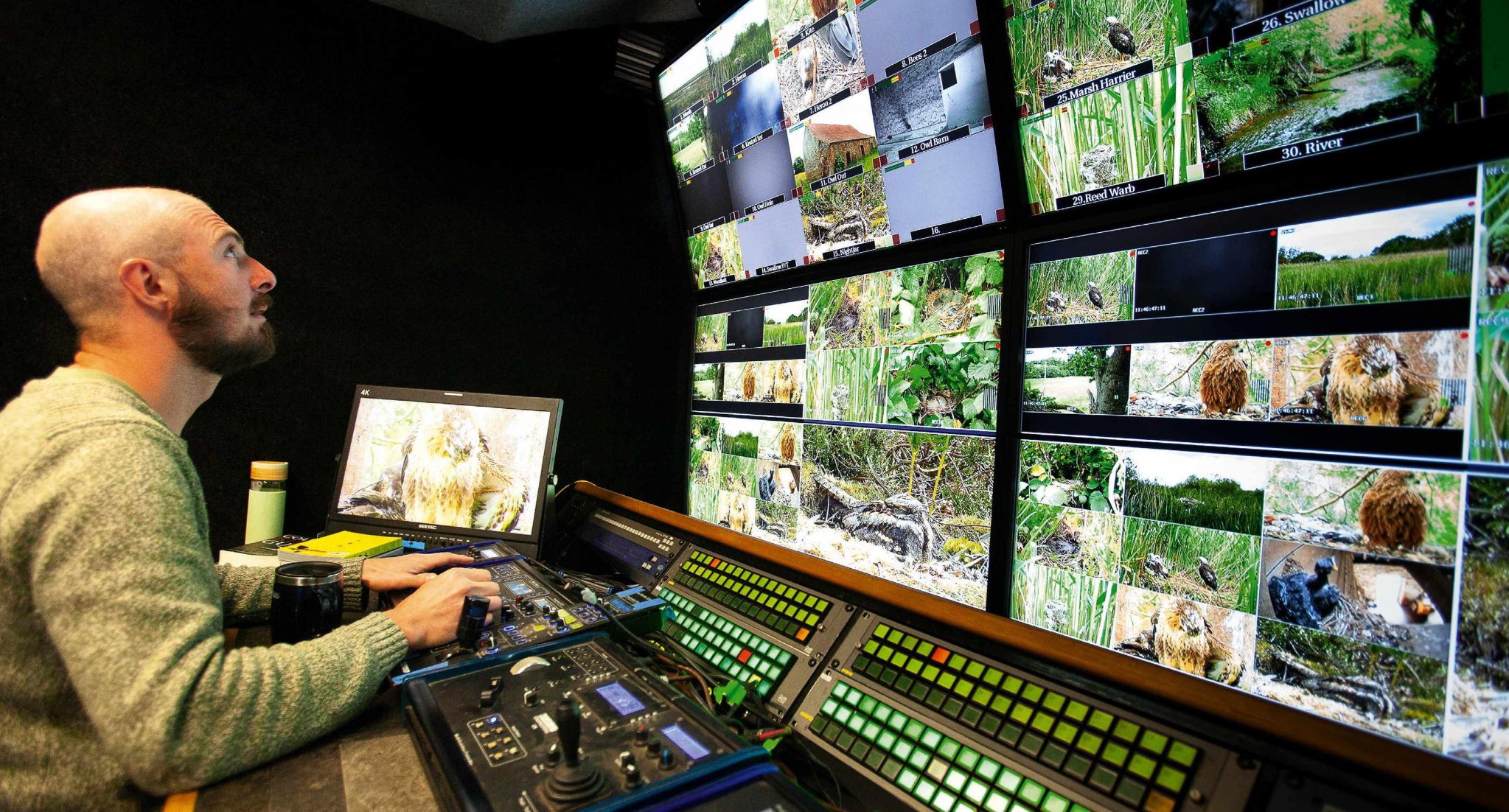
The main purpose of the editorial meeting is to run through this evening’s show. Every item is detailed and discussed, albeit at breakneck speed.
Conversation turns to kestrels, the undisputed stars of this series. They have now more or less fully fledged – could we expect any more from them live on the show tonight? Will they still even be there? It’s this uncertainty that makes working on Springwatch so unpredictable. Decisions have to be made on the fly, and last-minute changes are standard.
11am WITH THE MEETING FINISHED, Chris and Michaela run through their sections and divvy up tonight’s script. “Chris will usually tackle the big science stuff, because he likes that,” Michaela tells me. “I’ll do the more emotional stuff, because that’s what I really like.” She explains that, having worked together for so long – not to mention being such firm friends – there’s very little discussion needed to decide who’s doing which bit.
While Chris and Michaela look at their notes, write up their cue cards and deal with a never-ending stream of messages and requests, BBC Wildlife takes the opportunity to nose around the site.
From the front, all is calm. But as you come around the side of the barn, you’re greeted by a carnival of remote-working vehicles, with miles of cabling running in and out of the cavernous barn. Various members of the crew are busying themselves trying out camera shots, walking through ideas to use later, or chasing up news of the real stars of the show – the animals.
And this is just the Norfolk end of proceedings. I’m reminded that this set-up is duplicated on Mull and again in the North East; the scale of the operation is beginning to hit home.
11.45 REVISIONS ARE MADE TO THE opening sequence for tonight’s show. A problem with the voiceover means that it’s going to need re-recording, which means finding time in Chris and Michaela’s already overloaded schedule to do it again.
12.15 AFTER A MORNING FOCUSED intently on tonight’s broadcast, early afternoon sees attention turn to the next day, with a script meeting for tomorrow’s episode. Broadcasting every day means the pace is relentless.
The meeting begins with a run-through of highlights from the pre-recorded clips (VT). The respective benefits of herons and skylarks are evaluated. With such an unpredictable live programme, it’s important to have plenty of VT ready to roll as you never know what’s going to be happening on the live cams. At the same time, the team has to be agile to drop everything when the animals choose to become active.
A large part of the skill is in joining the various elements together. With so many
cameras and locations, creating a narrative is what gives Springwatch its universal appeal.

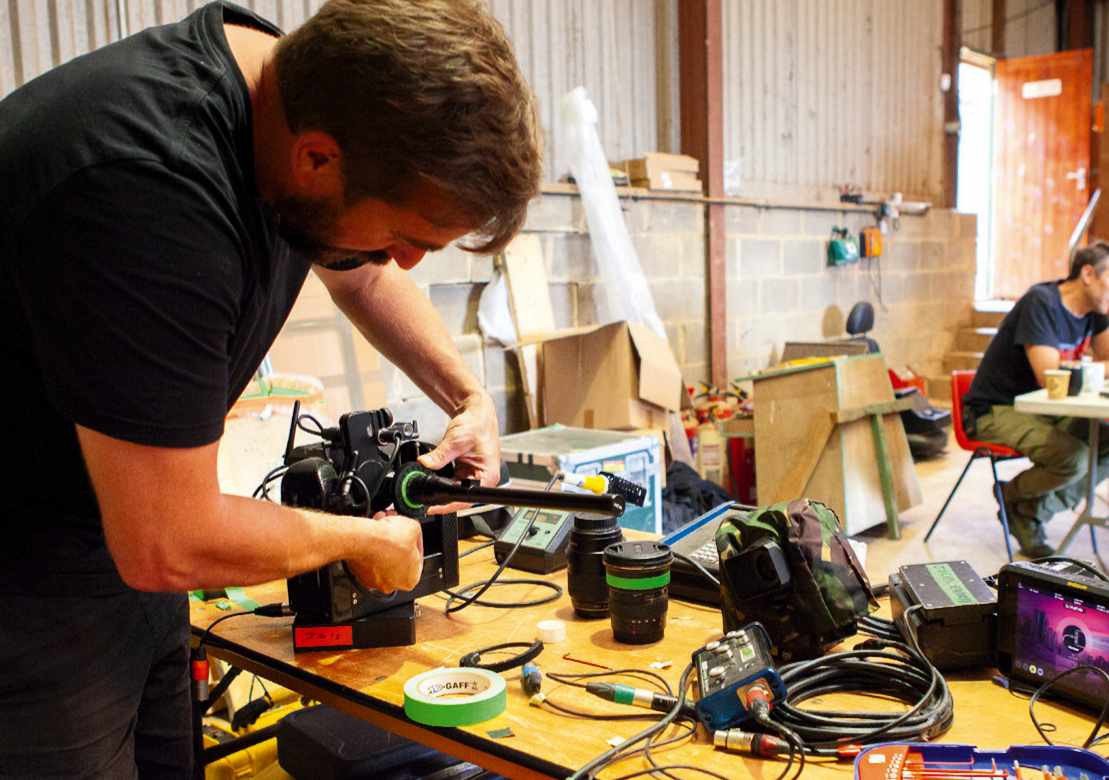
14.00 AFTER A COMMUNAL LUNCH in the sun (today is a meat-free Monday, and delicious to boot), the afternoon kicks off with a block rehearsal. Not quite a full rehearsal, this is effectively a walk-through of the evening’s programme, making sure everything works, checking camera positions, testing any props to be used, and making late adjustments to the desired shots.
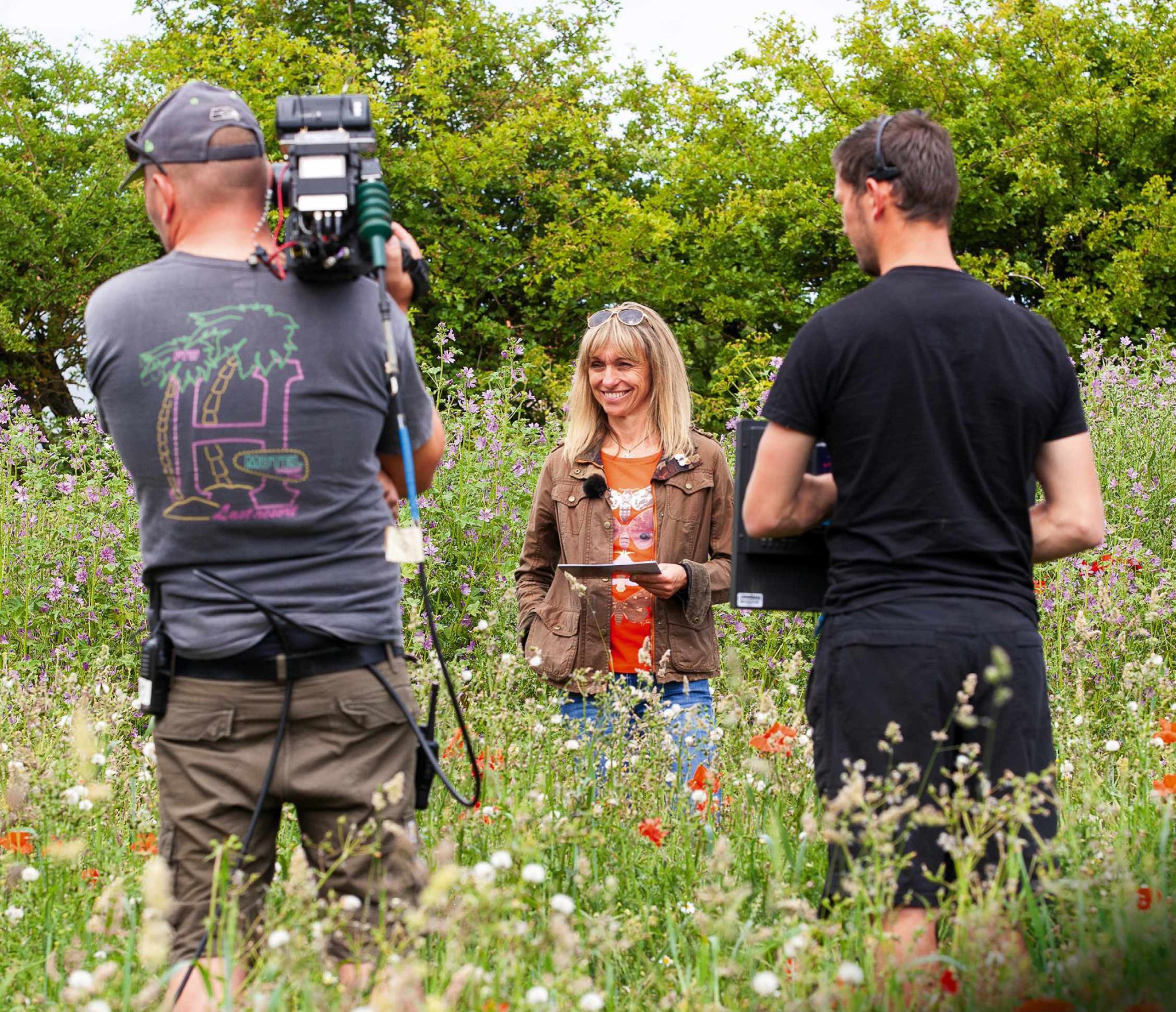
Tonight’s team heads up a set of steps into the Outside Broadcast Vehicle (OBV). This huge trailer acts as a TV production studio on wheels, allowing the BBC to broadcast live from events as diverse as Glastonbury Festival, the Chelsea Flower Show and Wimbledon.
Stepping into the OB vehicle is akin to entering that other famous BBC vehicle, the TARDIS. Banks of desks, a dizzying number of screens, lights, meters, timers and headsets are all staffed by yet more members of the production team. Alongside various producers are a sound team and assorted other technical staff whose heads appear occasionally from behind the bank of monitors.
Iolo appears on a screen, live from a bluebell meadow on the rugged Mull coastline, chatting away with a colleague about the best otter sites on the island. The changeable Scottish weather now looks as glorious as the scenery. “The sun is out so we’re happy with that,” Iolo smiles. There are technical issues to report: “Just so you know, we haven’t got the thingy here.” The thingy in question turns out to be a monitor. Unlike Iolo, we have them in spades.
“Climbing aboard the Outside Broadcast Vehicle is like stepping into the TARDIS”
To those unaccustomed to the inner workings of TV production it can be disconcerting to listen to Iolo talking away to camera while the OB director issues endless cues and commands, telling Iolo when he’s back in vision, requesting changes to the shot from the cameraman, and alerting all to what’s coming next. Everything is timed to the second. “It’s much harder without the monitor,” Iolo comments. “I can’t see what I’m talking about at the moment!”
Along with screens showing the locations, test signals and monitors broadcasting BBC One and Two live (“In case of breaking news,” we’re informed, “and to make sure we’re actually on air!”) there’s a bank of some 30 nest cams, woodland cams, and so on. It’s difficult not to get distracted by kestrel chicks and barn owls, as Megan appears on screen from Northumberland. Two live osprey nest cams, with forest and reservoir in the background respectively, vie for position.
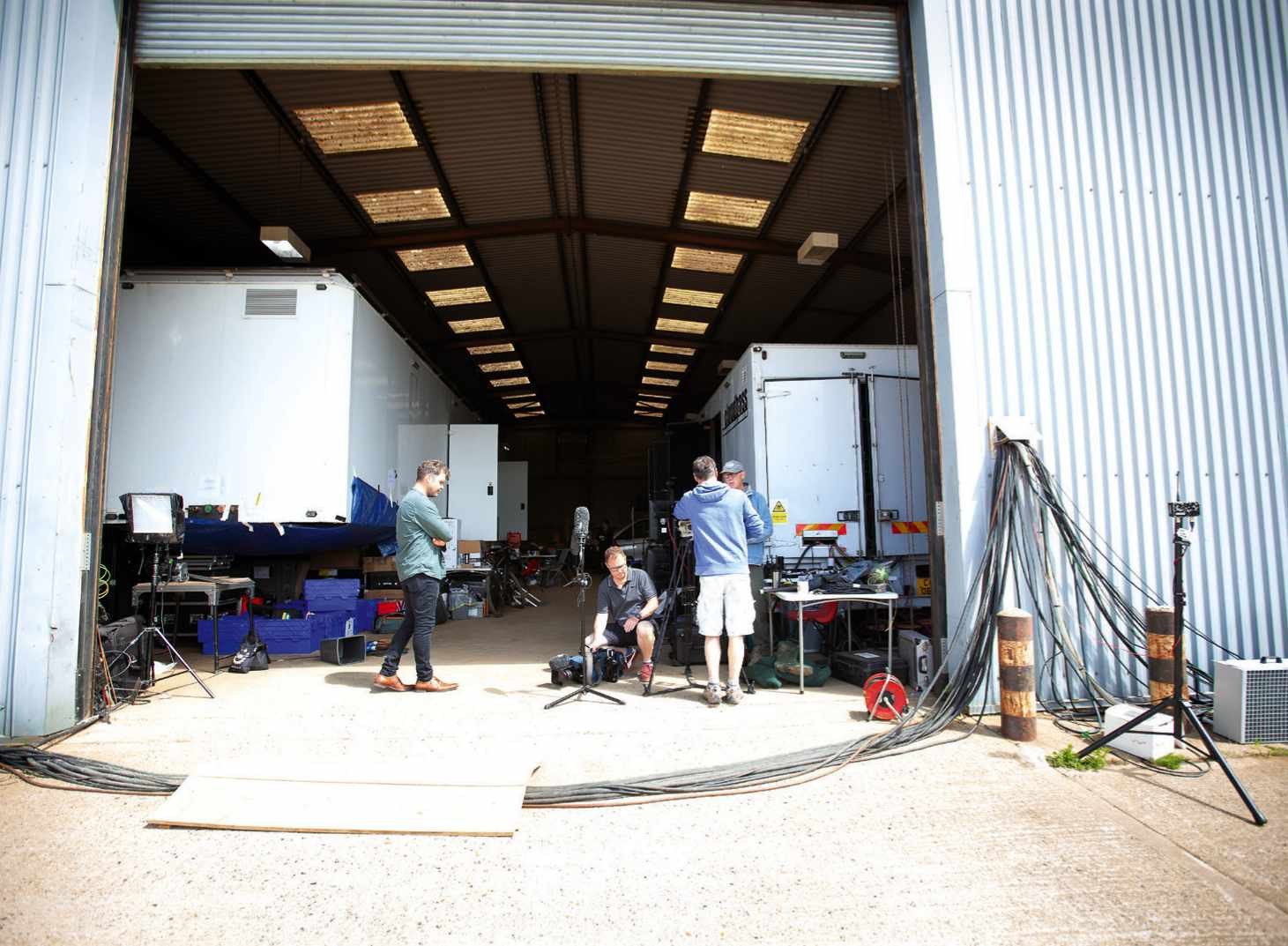
Immediately apparent is the difference in technique between the various presenters. While Iolo went through his sections as though he were live on air, Megan prefers just to walk it through: “I’ll talk a little about the woodland here… this is what we’ve seen so far… then we’ve got oystercatchers and goosanders, a nice bit of sexual dimorphism…” The crew’s faces are in nets to shield them from the swarming midges, but poor Megan has nothing but cue cards to protect her.
It’s understandable Megan wants to keep some energy in reserve. It’s a 12+ hour day, and with the all-important broadcast not coming until the final hour, it’s vital the presenters stay fresh and keep plenty back. Not least as tomorrow is another full day, as is the next day and the day after that. Over the course of three weeks, Springwatch will broadcast some 15 hours of live television – no wonder they followed last year’s Bafta win with another nomination this year. This is extremely demanding television.
Regardless of the different approaches, it’s clear that both Iolo and Megan are well in control. Eventually, Megan is allowed to escape the midges.
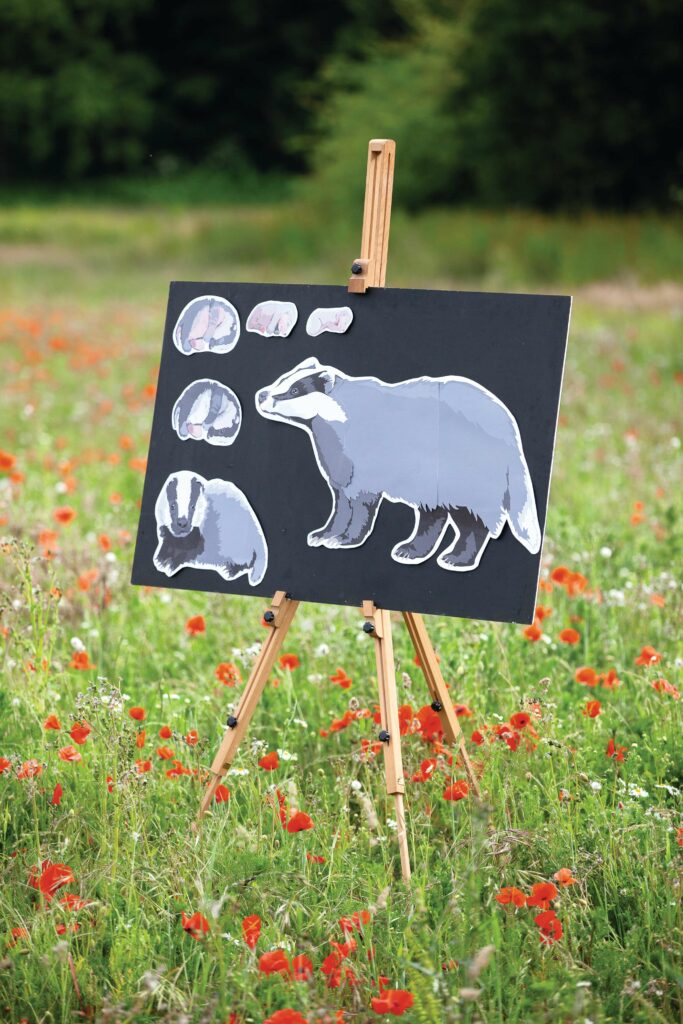


15:05 WITH UNDER FIVE HOURS until an hour’s live broadcast across multiple locations, the atmosphere is surprisingly jovial, and jokes ping back and forth. After a clip of a deer feeding, Chris pulls out a skull in classic BBC ‘Here’s one I made earlier’ style: “He looked fine yesterday but look at him today! He went downhill fast…”
While Michaela attempts to record a lively voiceover for the top of the programme, Chris pretends to doze off next to her. As interference interrupts the sound, Michaela remembers to switch her phone to airplane mode. “How many years?” Chris teases and everybody laughs. There’s a lighthearted atmosphere among the production crew and it betrays the team spirit that is palpable from junior researchers to executive producer. “I like to make everybody feel they can speak up about anything,” series editor Jo Brame tells me.
15:15 FLOAT REVIEW SESSION. A float, we learn, is jargon for a piece of pre-edited film to be ‘floated in’ during the live broadcast. For example, when showing a piece of film sent in by a viewer, the float is the edited version of the reader’s video, over which the presenter talks live on air. This review session is the last chance to make tweaks before the clips are finalised ready for broadcast.
There’s still lots left to do – including a full run-through of the programme as-live. Just as the dress rehearsal is about to begin, Chris suggests a change of running order: “I’m just thinking of getting more great wildlife in at the top,” he explains. Such is the team’s can-do attitude, the suggestion is greeted with a thumbs-up and the adjustments are duly made.
16.49 TIME FOR THE FINAL DRESS rehearsal as the clock ticks inexorably onwards towards the 8pm live broadcast. All the various files, clips and edits needed for the broadcast are checked and double checked ready to be dropped in at the appropriate moment. Scripts have been updated to include the countless tweaks throughout the day, and the atmosphere takes on a more serious tone: there’s no turning back now.

“Just as the dress rehearsal is about to begin, Chris suggests a change of running order”
But there’s a delay. The dress rehearsal can’t go ahead until the final VTs are in place, and with changes being made up to the last minute, everything is on pause while we wait for an errant file to be delivered. With every minute precious, having this many people on stand-by is costly as well as frustrating.
As time edges onwards, it’s now getting tight to fit in the dress rehearsal, get Michaela and Chris changed and made-up (not to mention fed), and back in time to appear on The One Show to plug tonight’s show.
It’s 17.20 when the dress rehearsal finally begins, and to see the disparate elements come together at last is thrilling. On screen, Iolo, Megan, Michaela and Chris make it all seem so effortless, yet it’s a huge team effort that makes this show so beloved.
18.16 BANG ON CUE, AS CHRIS AND Michaela bring proceedings to a close, the evening meal arrives in the OBV. There’s no time for a break – with fixes needed on a number of items, the crew members eat on the go, just as they did at breakfast and lunch. Discussion continues between producers and presenters to get the timings bang on, and notes are given and taken. With each round of rehearsals, the quality is tightened and the finished product gets better and better.
19.10 WITH JUST 50 MINUTES LEFT until transmission, calls are being made to bring tomorrow’s episode together; as soon as the closing titles roll on today’s broadcast, all attention turns to tomorrow.
Live television is exciting, but also unforgiving. Sensing that we’re now at the critical stages, BBC Wildlife makes a quiet exit stage left shortly before the curtain goes up, relieved that, unlike the huge Springwatch team, we can go home to put our feet up in front of the TV, and won’t have to do this exhausting day all over again tomorrow.
20.00 BBC Wildlife pours a refreshing drink and settles in front of the TV: “Hello! And welcome to Springwatch…”
Find out all about the new series at discoverwildlife.com/springwatch
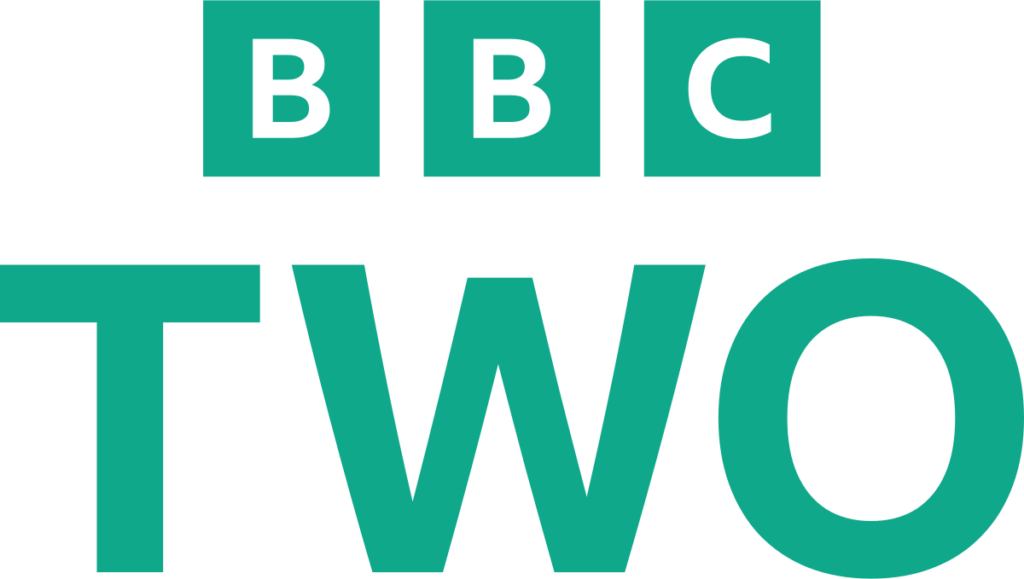
Springwatch is live from 29th May to 15th June
FIND OUT MORE
Springwatch 2023
WHEN: 29th May to 15th June on BBC Two
WHERE: Chris Packham and Michaela Strachan will be live from the new hub at RSPB Arne, Dorset, while Iolo Williams will be close by, roaming the Dorset countryside from his base in Purbeck Heaths. Gillian Burke will be in North Wales, where she’ll be reporting from Anglesey, Snowdonia and the Menai Straits, among other spots.
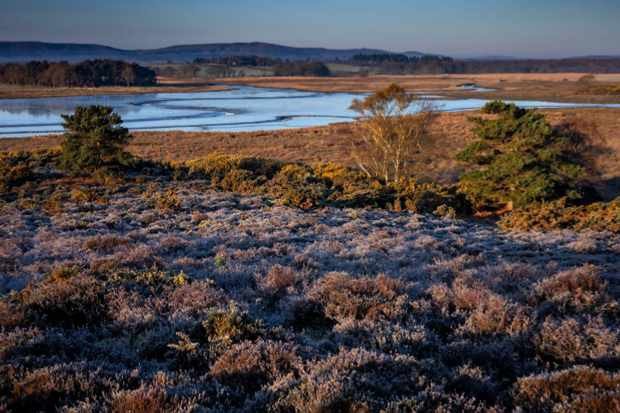
Meet the presenters
Paul McGuinness in conversation with Chris and Michaela
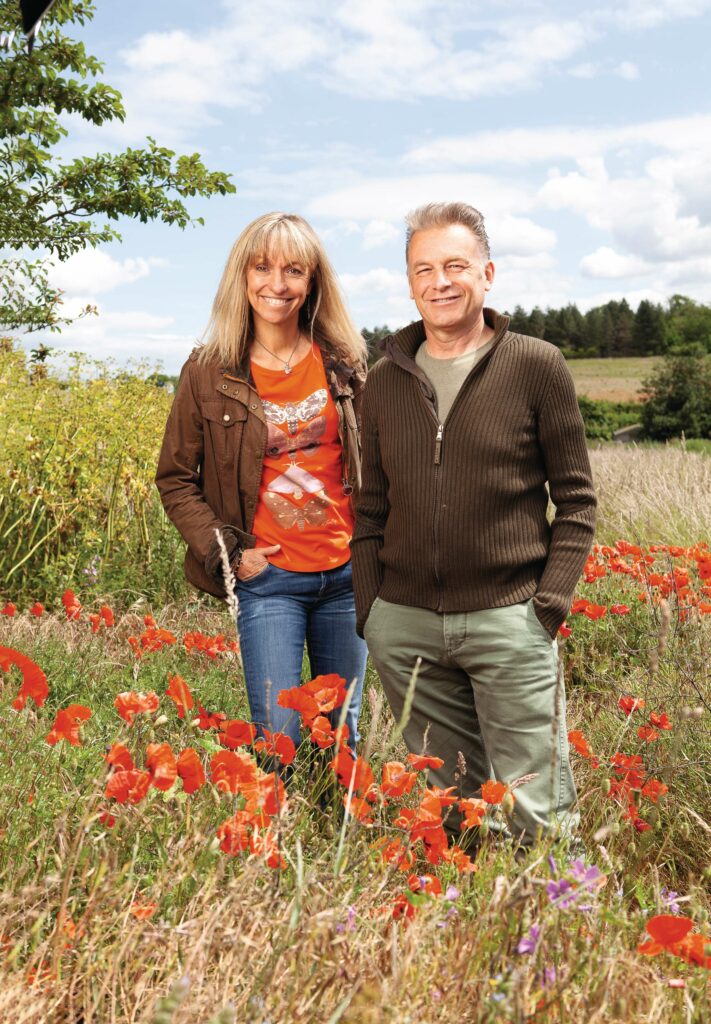
BBC Wildlife: What are the pros and cons of how Springwatch has changed since the Covid pandemic? You had to make a lot of changes…
Michaela Strachan: Some of those changes have stayed and some have worked really well actually. And others are frustrating changes. People seem to really like the fact that people are dotted around the country. Chris Packham: I don’t like the Zoom meetings. The problem with Zoom is that only one person can talk at once and you just don’t get that creative balance and banter.
But I love the carbon-friendly nature of it and we’ve made great strides actually since lockdown when it comes to improving the carbon footprint of the programme. I mean, the first one [during lockdown 2020], there were two cameramen, me and Megs, and a guy with a truck in my yard and we managed to get it out. That wasn’t going to be sustainable, but what we did off the back of that was to try much harder to address the programme’s carbon footprint.
BBCW: From the outside, working on Springwatch looks like great fun, but it must also be hard work…
MS: It’s a fantastic job but it is long hours, you’re away from home, it’s hard work. But, you know, having said that, I really enjoy making television, I always have.
CP: I’ve been very fortunate to be employed doing something I like. In the past, I’ve done jobs doing things that I didn’t like and I struggled.
BBCW: How easy is it to have a good work-life balance in this job?
MS: When I was younger, I didn’t have a balance at all, I was an absolute workaholic. But I’ve definitely got better at creating a balance. And I enjoy that balance. I really enjoy coming here and doing something that’s intense. But if I did this sort of workload every day, I’d be absolutely exhausted. I was knackered by Sunday! [Laughs]
ABOUT THE AUTHOR
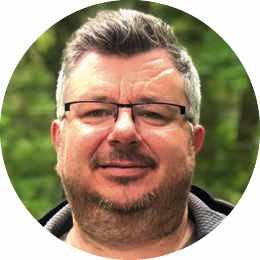
Paul McGuinness is editor of BBC Wildlife, and has also written for a number of other BBC magazines, including Science Focus, Countryfile, Sky At Night and History Revealed